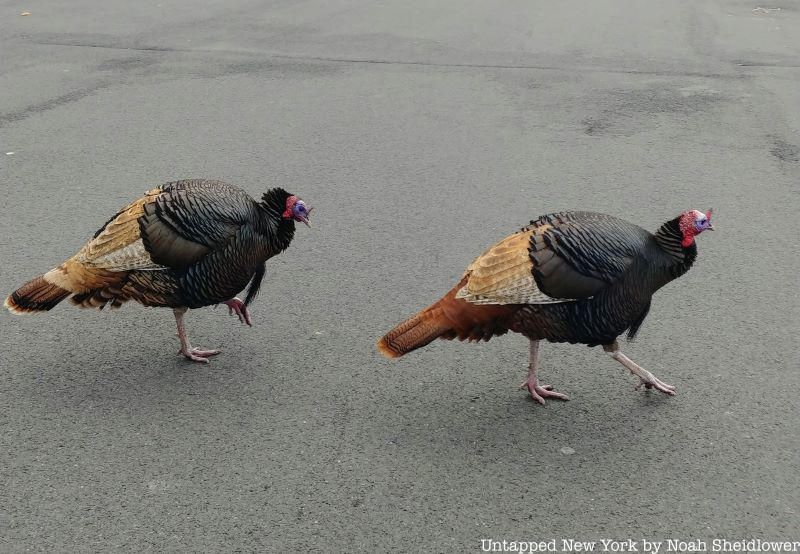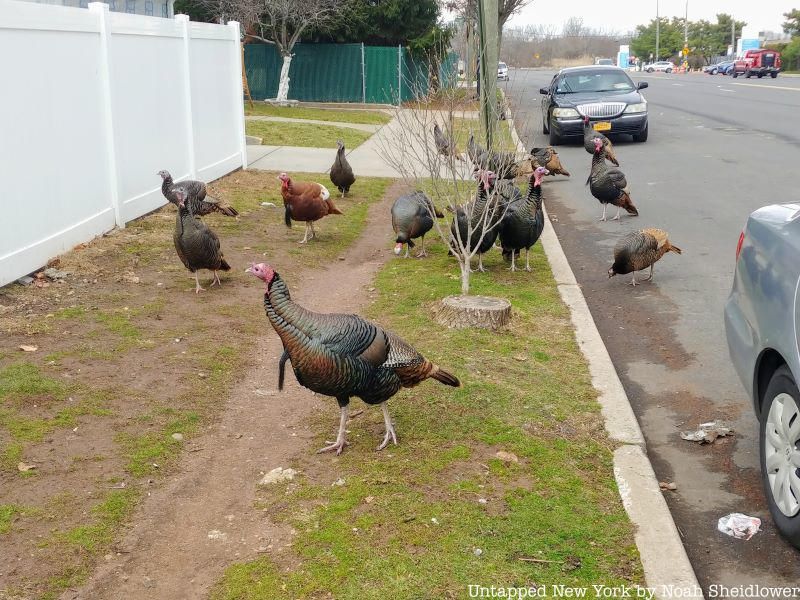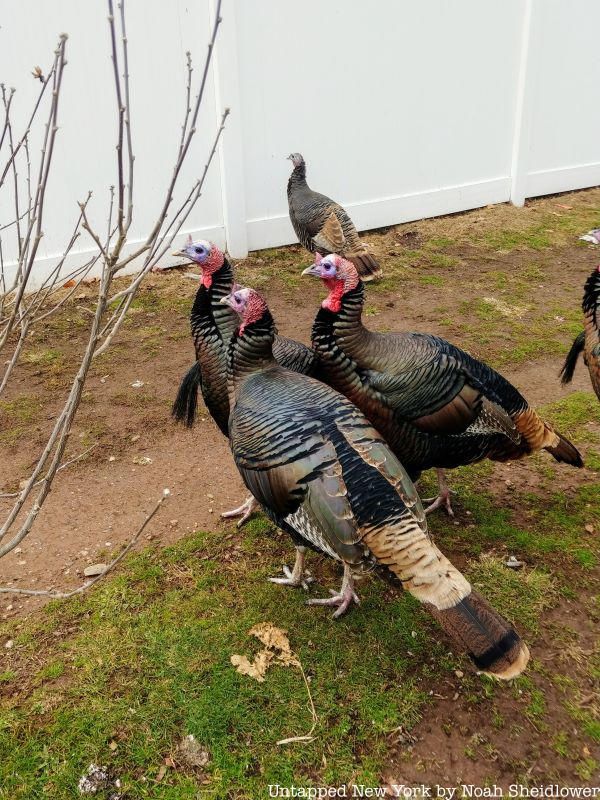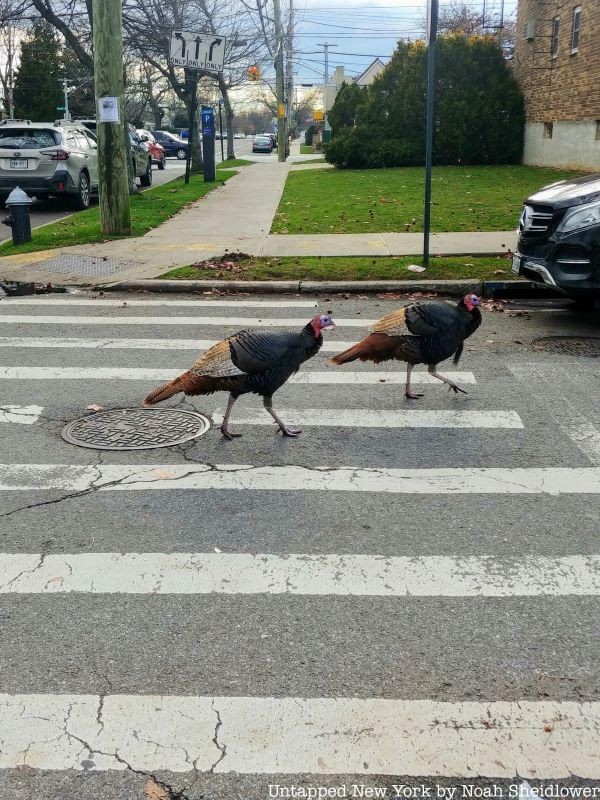An Original Stone Eagle Comes Home to Penn Station in NYC
A 7,500-pound eagle sculpture from the top of the original 1910 Penn Station building has been returned after years in hiding!


On a recent trip to Staten Island, my car was stopped unexpectedly by, of all things, wild turkeys. A group of at least 15 turkeys the height of my waist decided to cross the four-lane road and stop in the middle of it, refusing to move. A few cars piled up behind, but the turkeys stayed put, gobbling with one another as cars approached from every direction. It took a local resident on his walk to shoo the turkeys away over the course of a few minutes. A few people from across the street at Staten Island University Hospital crowded around taking photos of these disruptive turkeys, but for many local residents, these turkeys are a decades-long problem that has caused countless headaches and frustration.

Over the years, there have been attempts to curb the turkey problem, such as sending them to a wildlife sanctuary or tracking them more closely. However, some residents say that little has changed — some even think Staten Island‘s wild turkey population has grown during the COVID-19 pandemic, as city and state officials put their attention elsewhere. The Staten Island Advance reported that these turkeys have been disastrous for many in the community, from damaging cars and halting traffic to disrupting peace and quiet. One resident I spoke to who lived by Mason and Seaview Avenues said these turkeys are aggressive and “extremely annoying.” They make it difficult to do daily tasks like pulling the car out of the driveway or keeping the front lawn clean without these turkeys finding a way in.

The turkeys were mainly concentrated around the hospital and in nearby neighborhoods like Ocean Breeze, Dongan Hills, and Arrochar. However, they expanded in all directions to other parts of the borough, walking around the streets like pedestrians. This all began in the mid-1990s, according to the Staten Island Advance archives that date the first wild turkey photographs to 1996. Few people in the community tried to prevent their rapid population growth, so the turkey population grew to the hundreds by the early 2010s. The Department of Environmental Conservation conservatively estimated the population at just 100 in 2011.

Residents feared that unless something was done to get these turkeys under control, it would cost the borough thousands of dollars and lead some residents to move away. Strangely, turkeys were not the borough’s first animal pest. Staten Island has also been fighting a growing deer population, which damages the island’s plentiful greenery and seedlings. The borough has undertaken a deer sterilization program that reduced the deer population by 15% from 2017 to 2019 from 2,053 to 1,737. Still, deer cause dozens of accidents on the island each year, prompting some residents to advocate for deer culling, or killing some less-than-desired deer.

There were attempts over a decade ago to relocate turkeys found at the South Beach Psychiatric Center near the hospital, where many would congregate; in 1999, a local resident freed her nine pet turkeys at the center. In 2014, an agreement was reached between the Staten Island University Hospital, the state Department of Environmental Conservation, and the U.S. Department of Agriculture that permitted the capture and relocation of wild turkeys found on hospital grounds. Many considered this a step in the right direction, as the turkeys would be relocated to an animal sanctuary in Greene County. In 2018, Mid-Island Councilman and Minority Leader Steven Matteo secured $100,000 in discretionary funds to capture and relocate as many of these birds as possible.

Many of these initiatives were fairly successful; the Staten Island Advance reported over 150 turkeys were taken to And-Hof Sanctuary in Catskill from 2014 to 2018. These 150 (and 200 by 2019) were only a dent in the likely hundreds more turkeys still on the island. The relocation was paused since the sanctuary did not have enough room for any additional birds. Some even tried to escape the property! Because the turkeys were identified as hybrids between domesticated and captive-bred turkeys, it has been difficult to find a fitting home for them.

As of early 2022, there were still no clear solutions to resolving the turkey problem, and residents have been encouraged to let the wildlife be. Some have proposed more long-term solutions like reducing turkey food sources instead of relocation. In April of this year, Spectrum News reported residents encountering turkeys in West Brighton in northeast Staten Island. Until more concrete solutions and programs are put in place, Staten Island’s residents may continue finding wild turkeys in unexpected areas, such as on Forest Hill Road, Victory Boulevard, and Silver Lake Park.
Next, check out 10 Abandoned Places to Discover on Staten Island!
Subscribe to our newsletter